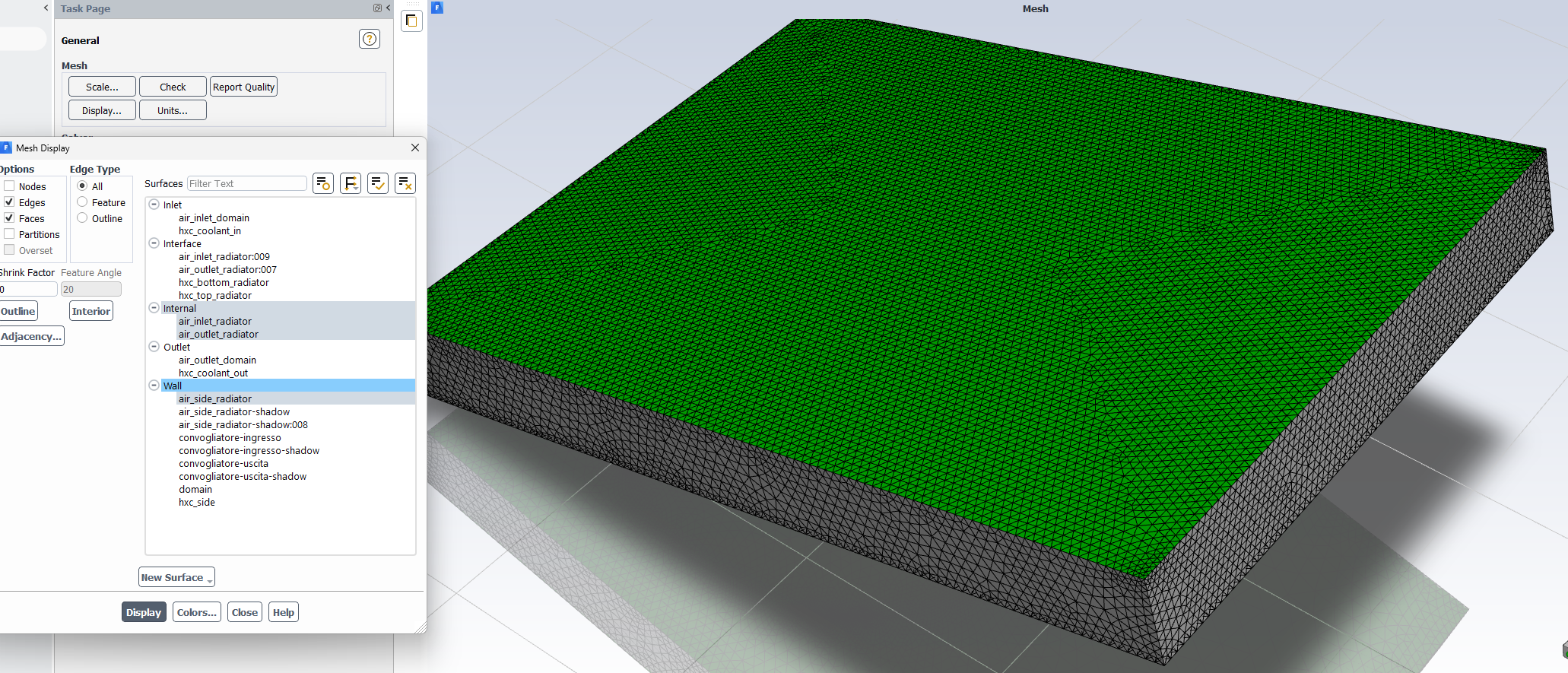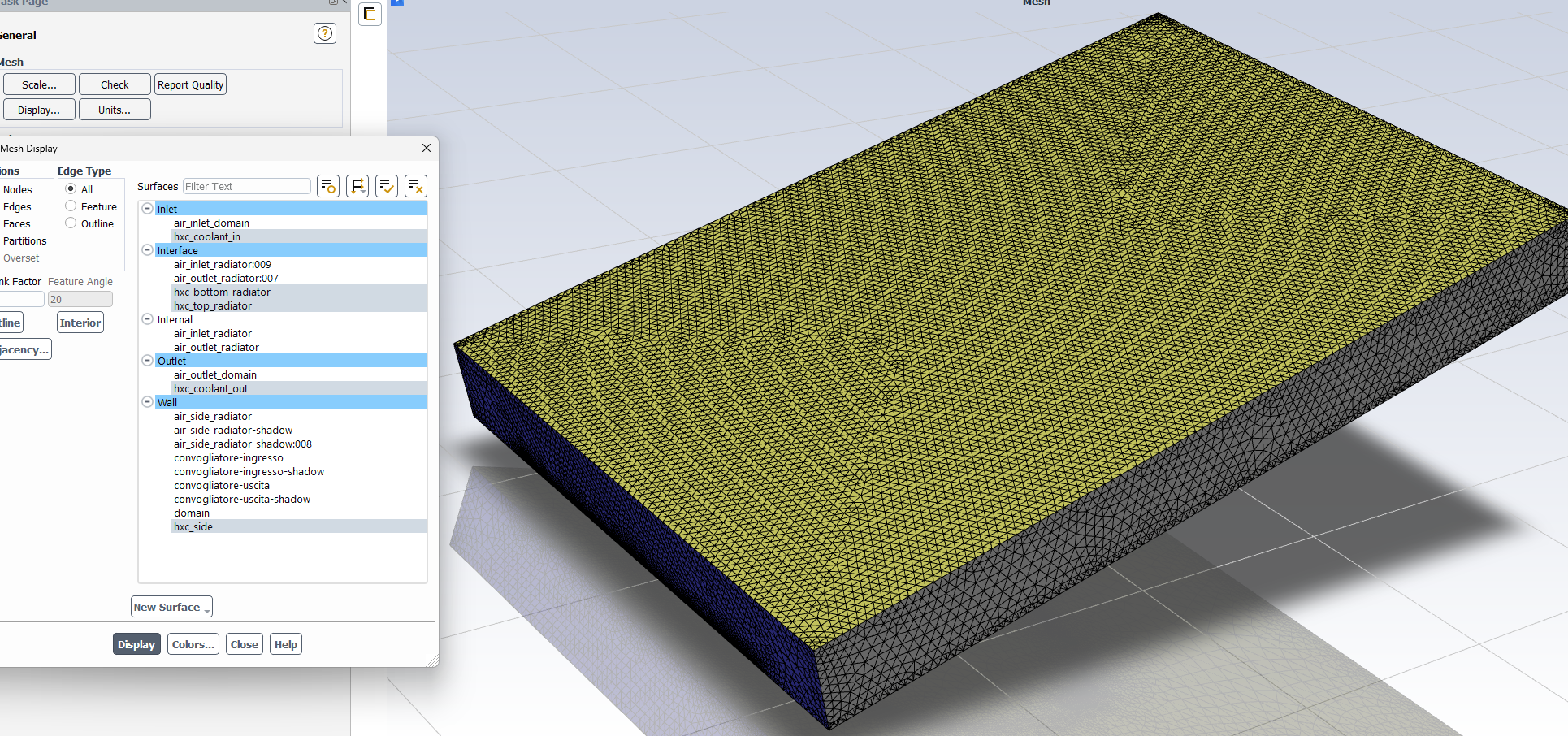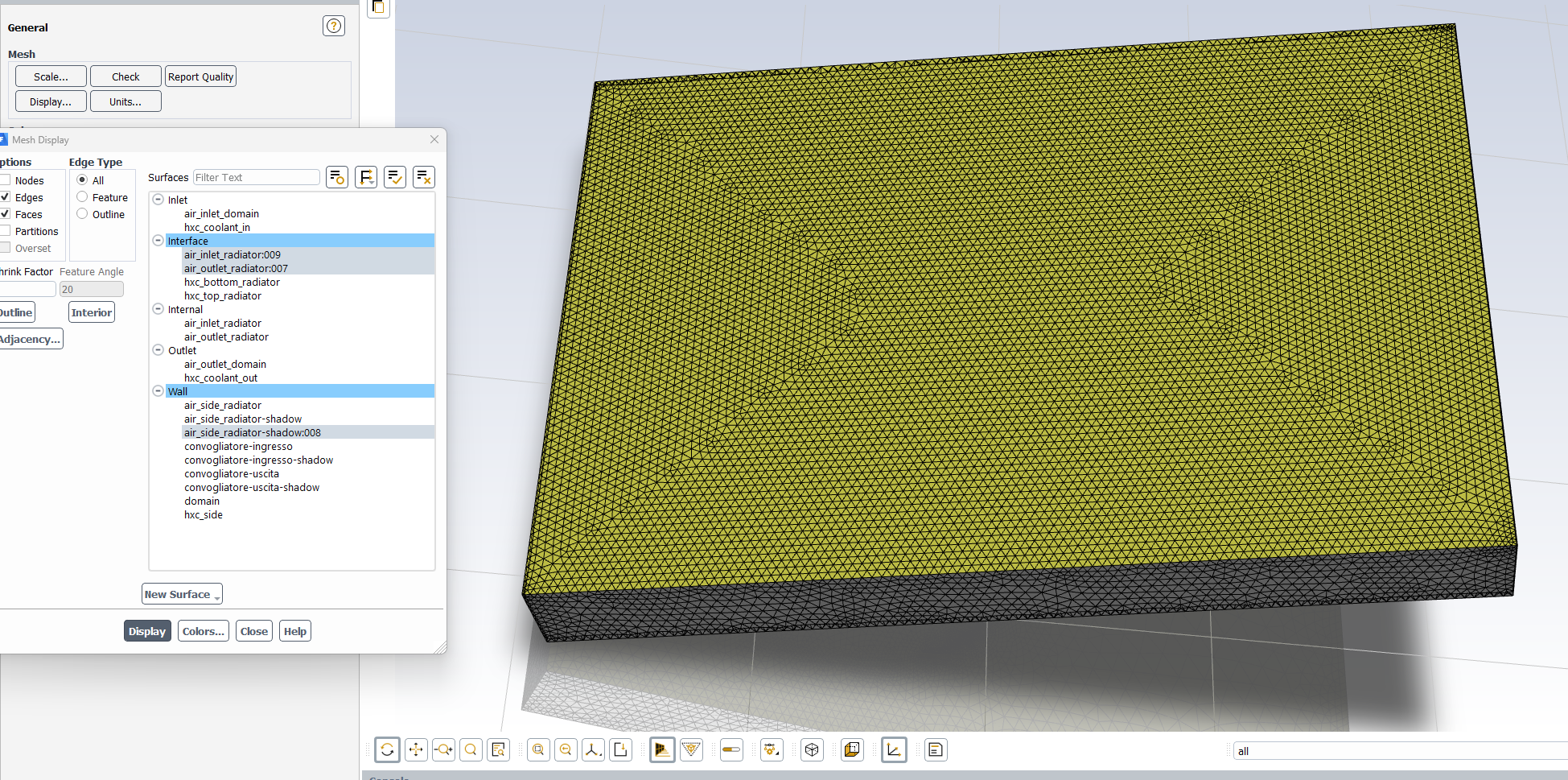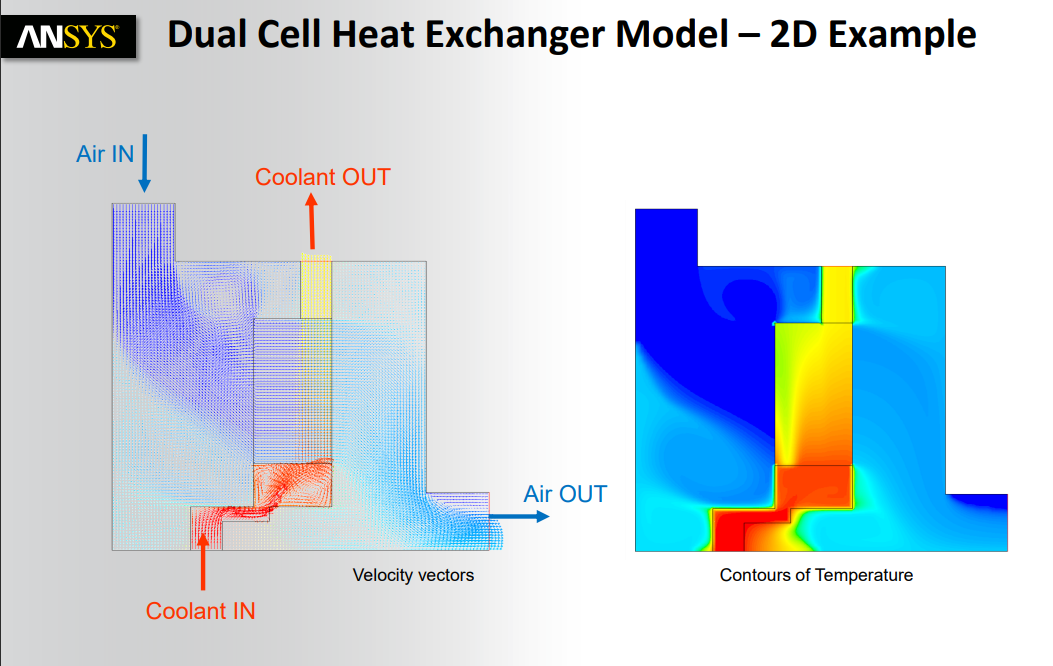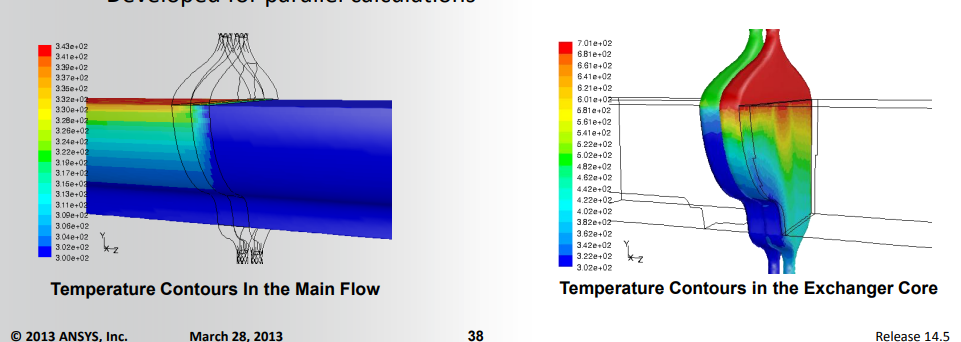-
-
October 26, 2023 at 2:10 pm
Andrea De Gaetano
SubscriberHi, i'm having some problems with this method, so i would like to understand what i'm doing wrong. please this is my thesis work and no one is able to help me, whereas the fact i didn't find nothing on internet that explain how make this in a good way.
Basically i have one rectangular radiator and i have to study in fluent trough the dual cell method the heat exchanger generated. Using the dual cell method i need two identical 'fluid' mesh one for the air and one for the hxc as well. what i'm doing is organzed in these steps:
- i have duplicated the cell zone, so i have 2 identical 'fluid' zones one for the air and one for the hxc
- i went into the 'air_fluid' and i switched on the porouse zone with the non equilibrium thermal model, related at the solid volume, as you can see on the picture
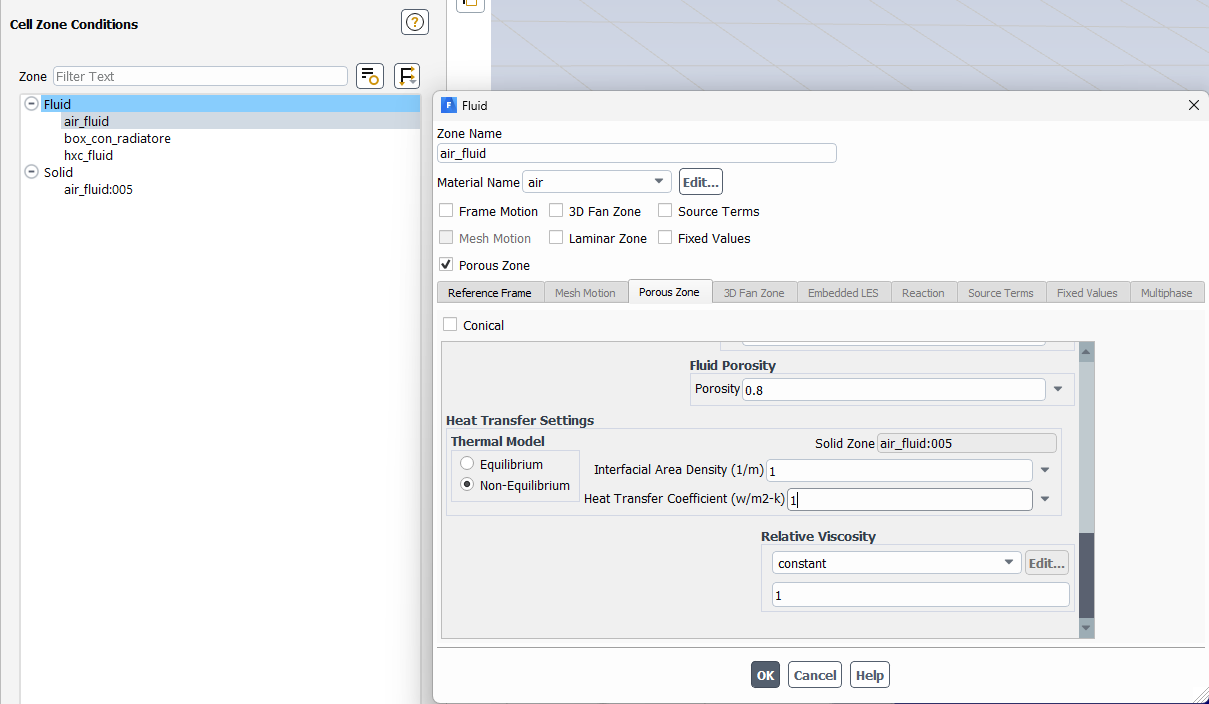
- but now i don't know how to set the boundary condition for the eventual interface. these are meshs
when i set the dual cell mode and i run it, i don't have any heat exchange, so i don't know what i'm doing wrong, i should get someting like this:
-
October 30, 2023 at 1:59 pm
C N
Ansys EmployeeHello Andrea,
There are some restrictions for dual cell model . Please refer this link
6.2.2. Restrictions of the Dual Cell Model (ansys.com)
Make sure your meshes are one to one paired properly at interface.
48.7. Boundary Conditions Task Page (ansys.com) Please refer to this link on how to set up appropriate boundary conditions.
I recommend you to do mesh manipulation like create the primary fluid mesh and secondary fluid meh seperately then append the meshes one over the the other .
In the case of a heat exchanger in which the primary and auxiliary meshes are not identical, heat transfer may be non-conservative (that is, the heat lost by the hot fluid may not equal the heat gained by the cold fluid). To minimize the difference in heat transfer, the topology and size of the primary and auxiliary cells should be as similar as possible, with the ideal being one-to-one cell conductivity.I hope this helps you in your simulationThanks,
-
- The topic ‘HELP THESIS, non equilibrium Thermal model for dual cell mode Heat exchanger’ is closed to new replies.



-
4618
-
1530
-
1386
-
1210
-
1021

© 2025 Copyright ANSYS, Inc. All rights reserved.

